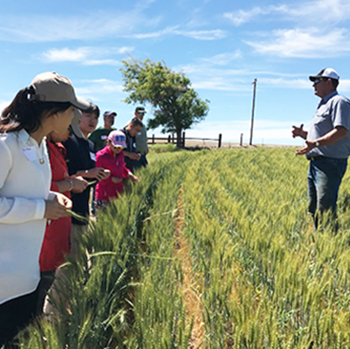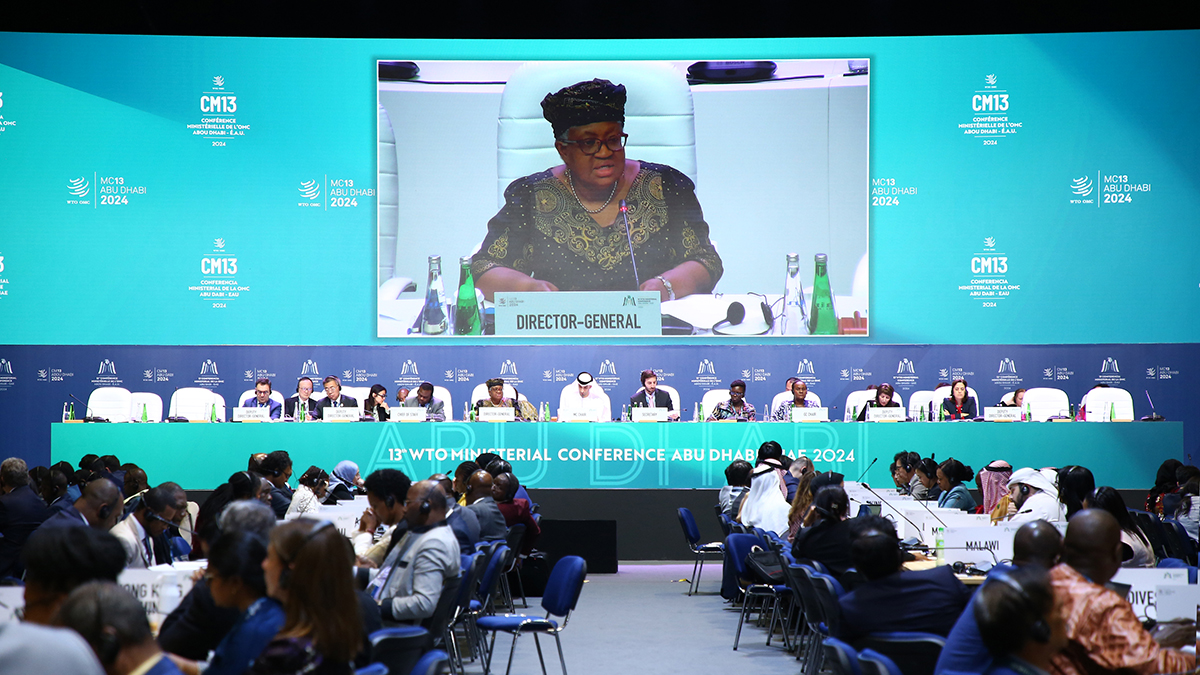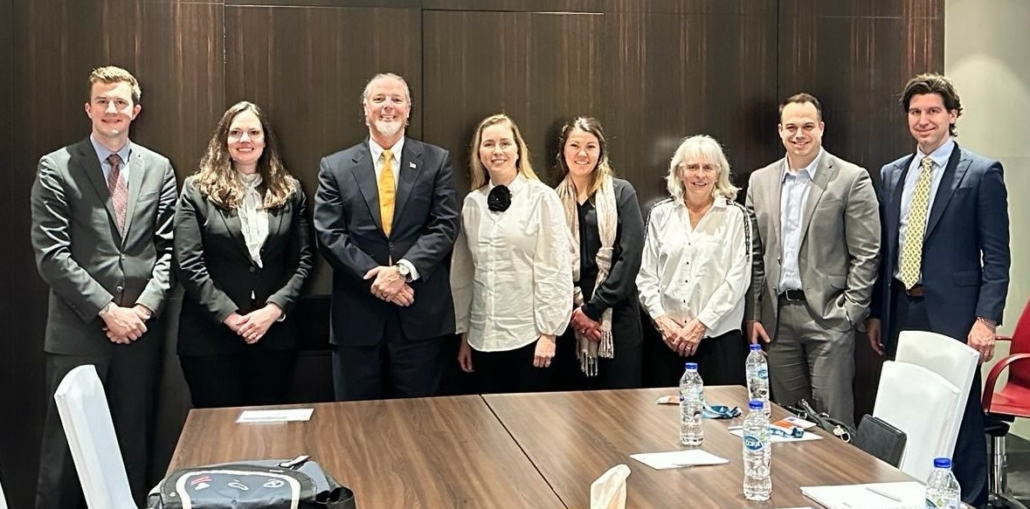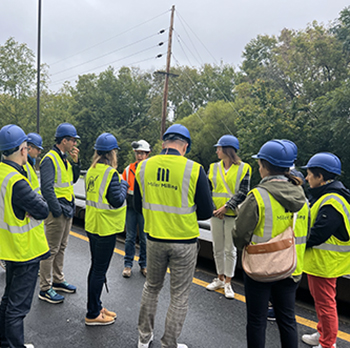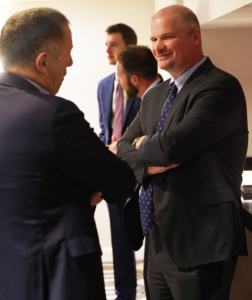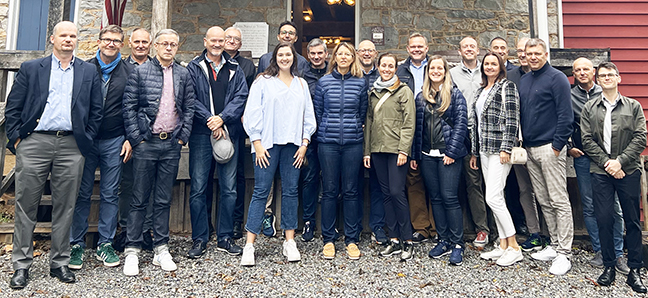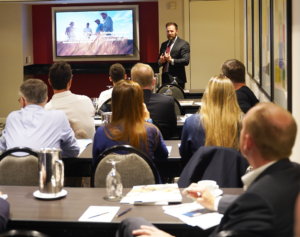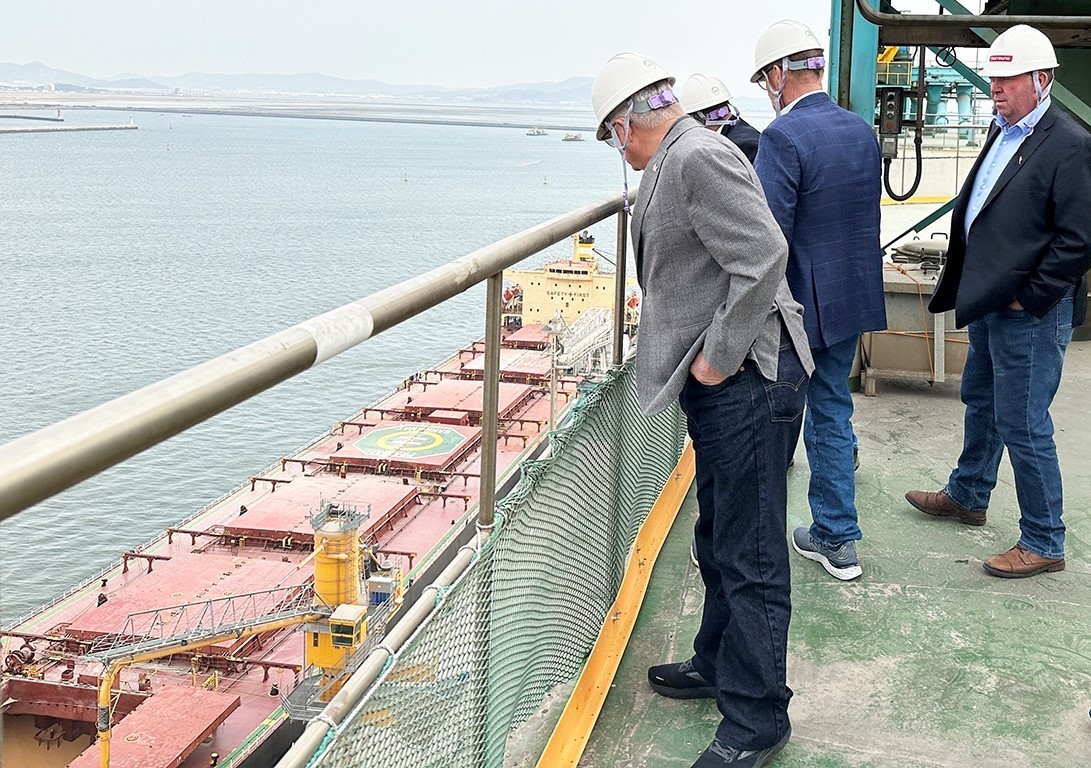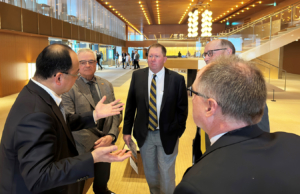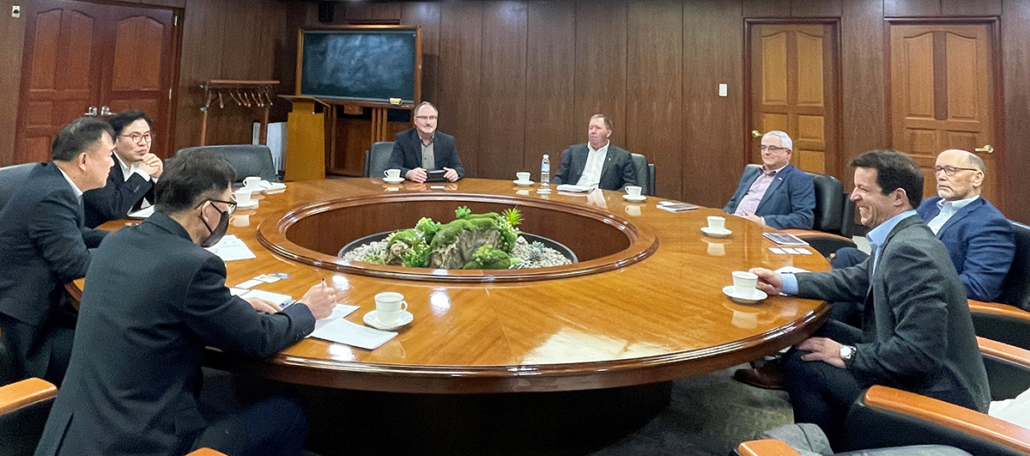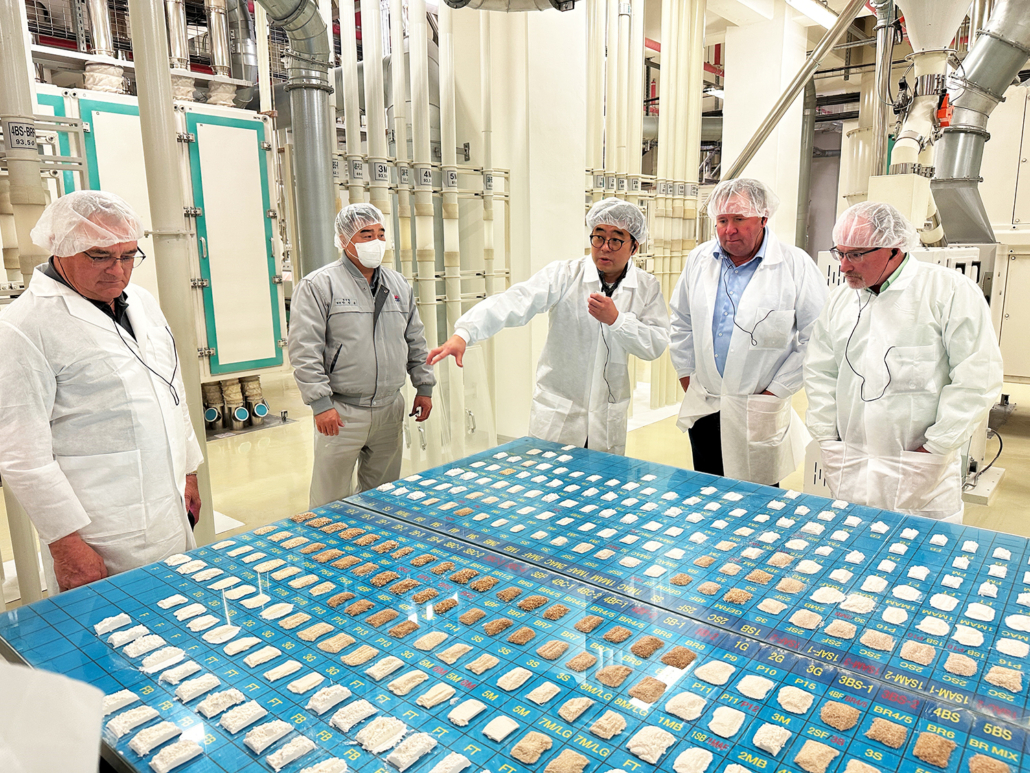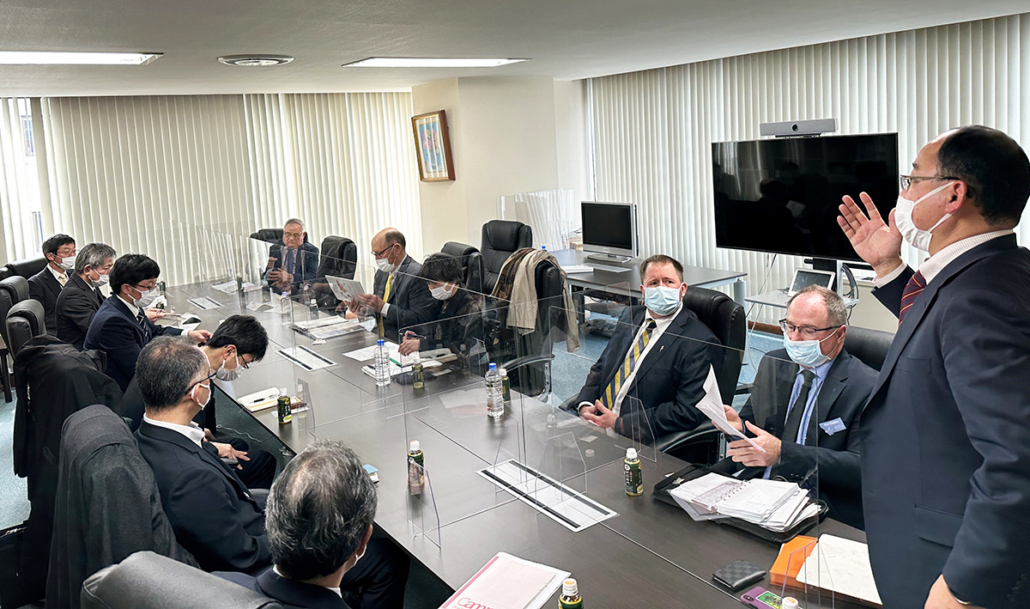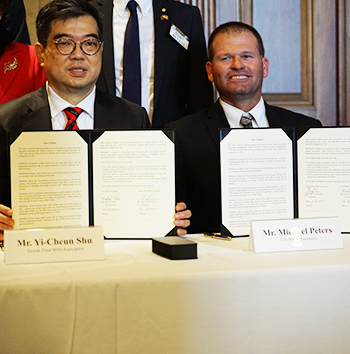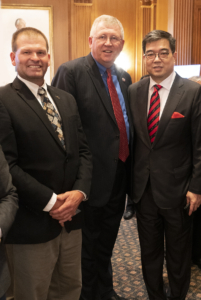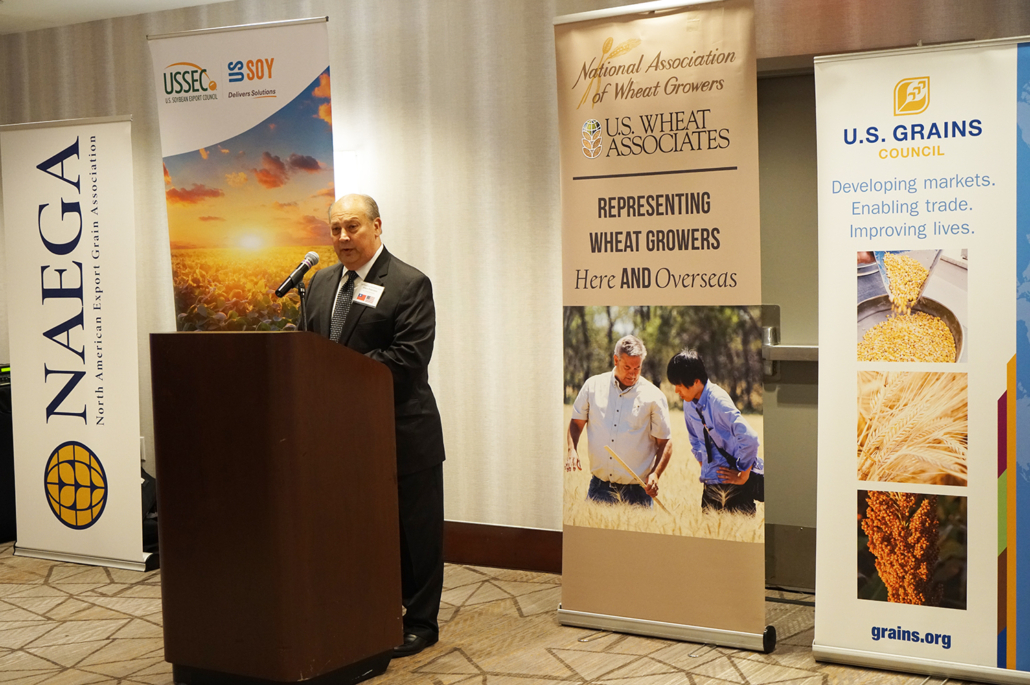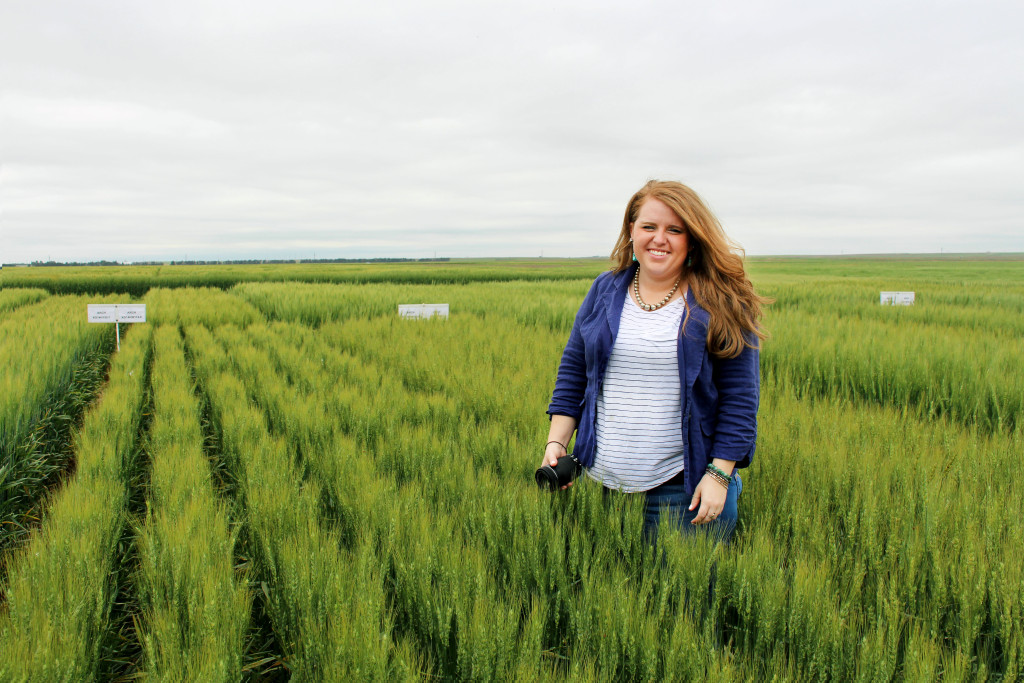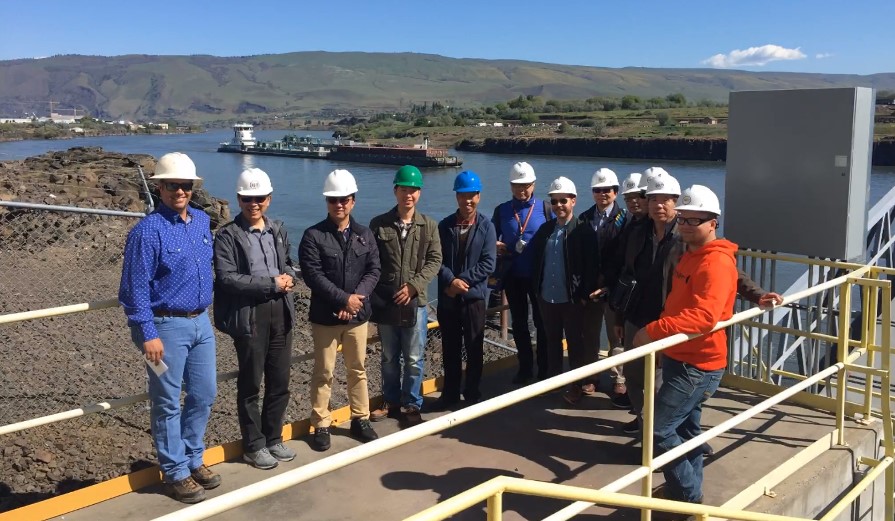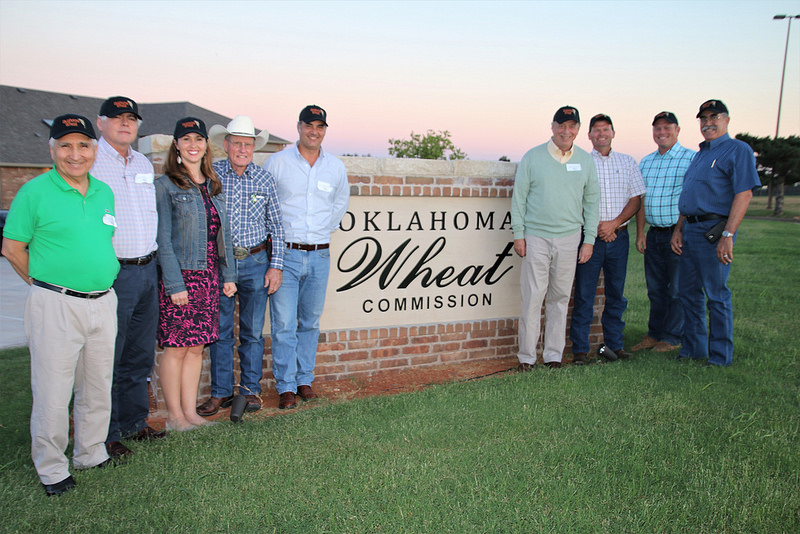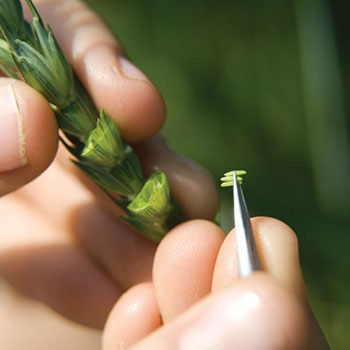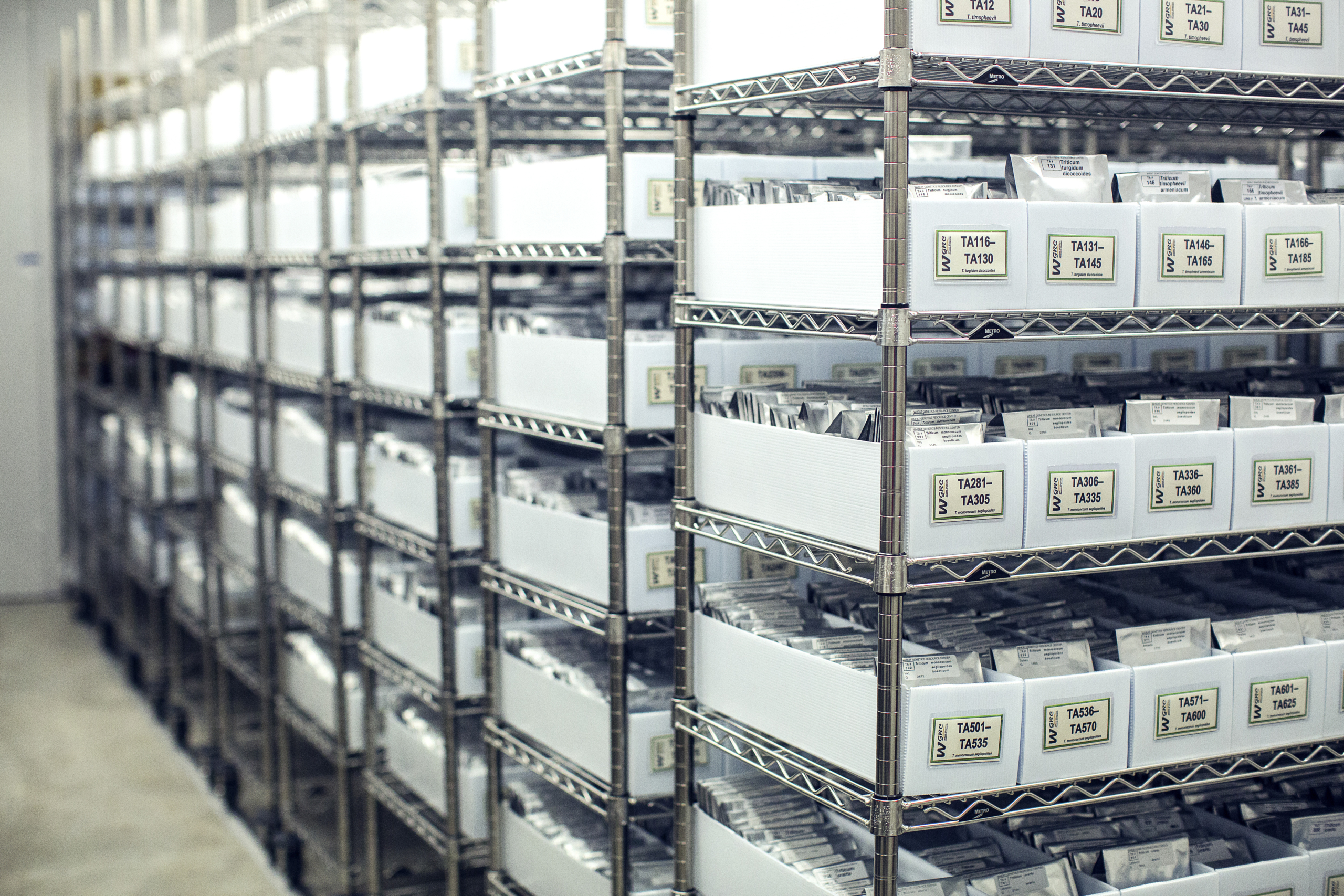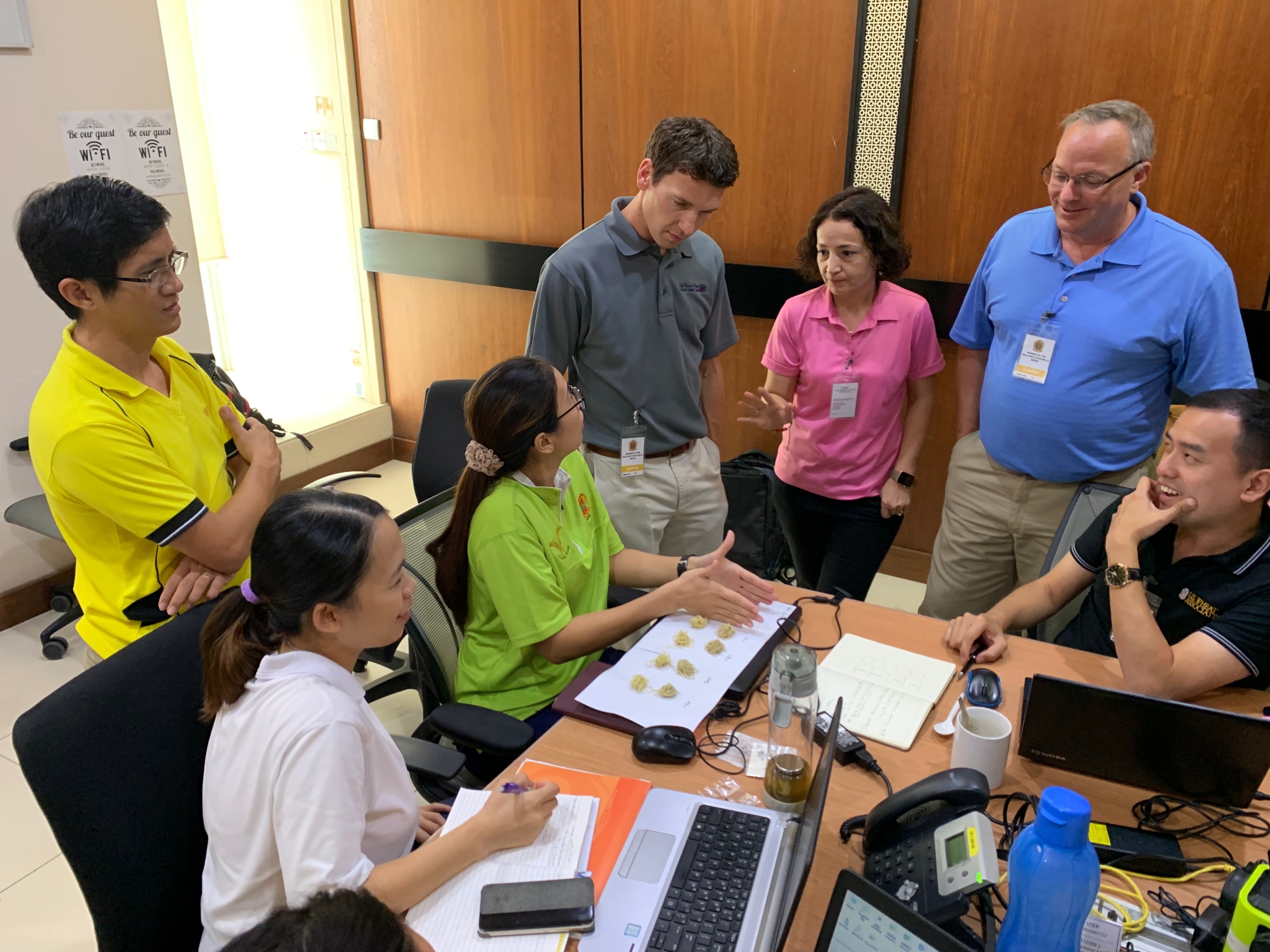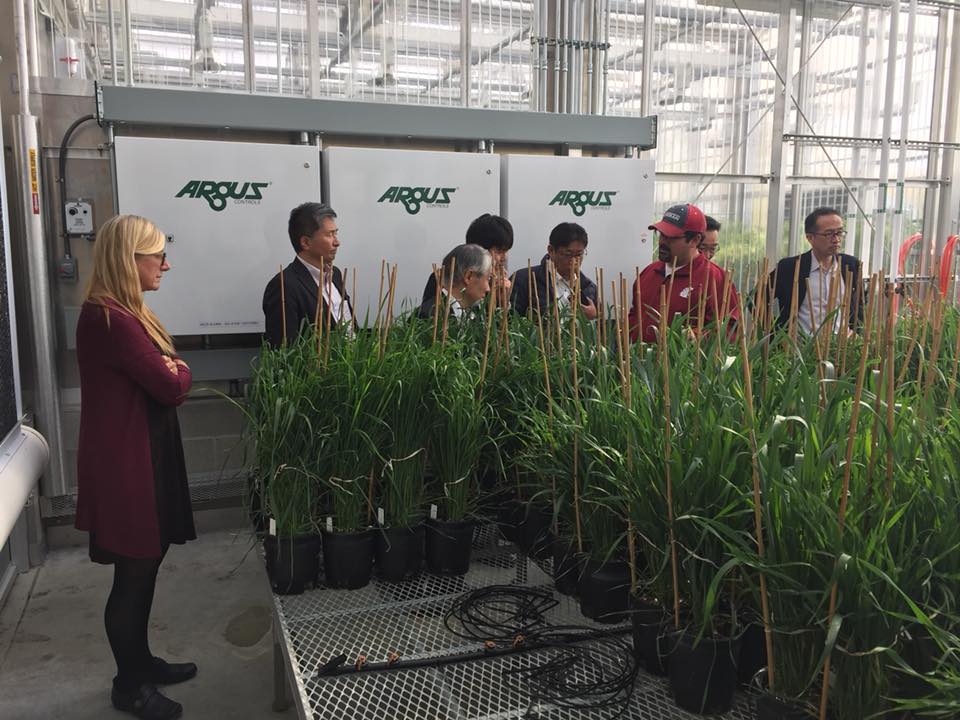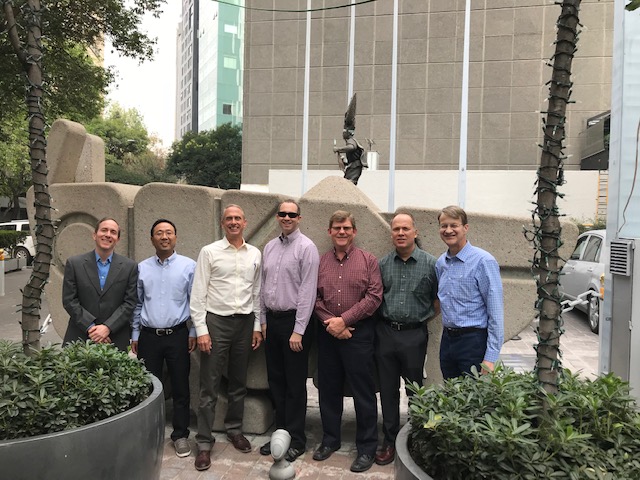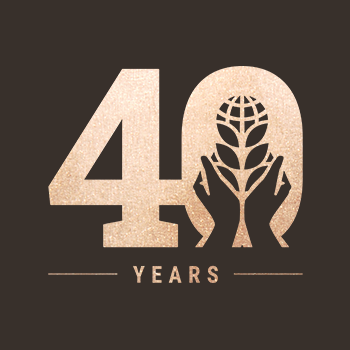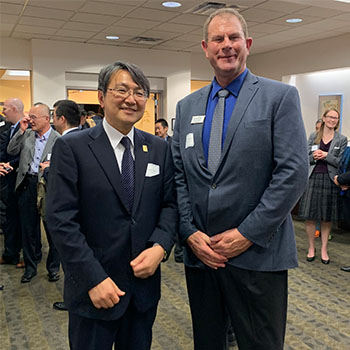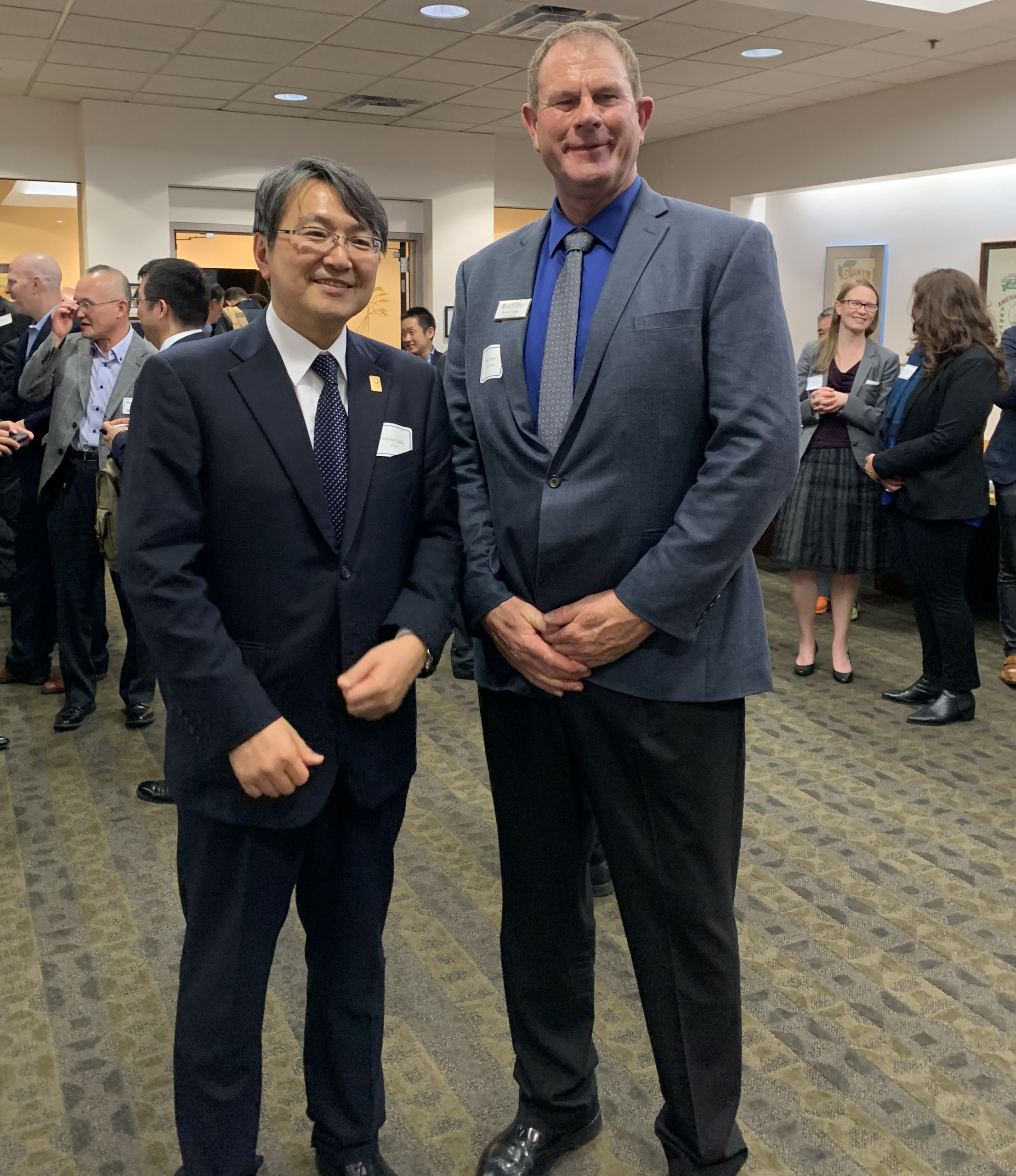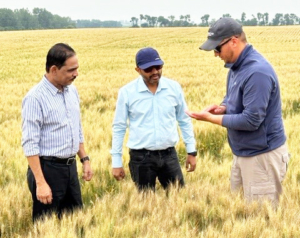
In a scene from an August 2023 trade team visit to North Dakota, wheat buyers from Nigeria and Kenya join North Dakota Wheat Commissioner and farmer Scott Huso in one of his fields to get a look at the wheat crop.
Above photo: Idaho wheat farmer and USW Vice Chairman Clark Hamilton talks with members of a South American wheat trade team about his wheat fields during a past trade team visit.
Wheat buyers from Egypt, Japan the Philippines and three other countries are scheduled to visit the U.S. in coming months to seek information about the high-quality wheat crop and meet the people responsible for it.
Indeed, U.S. Wheat Associates (USW) is ready to launch another trade team season.
“Inviting, hosting and leading trade teams is a key piece of the puzzle for our market development activities,” said USW Director of Programs Catherine Miller. “Each trade team season, we look for ways to help U.S. wheat customers learn more about wheat-producing states, the U.S. supply chain system and each of the six wheat classes. It all begins by collaborating with staff in our overseas offices and the state wheat commissions to identify opportunities and put together informative itineraries for the teams.”
Oregon, Minnesota Hosts Egyptian Team
A group of private Egyptian wheat buyers kicks the season off in late April by visiting Oregon and Minnesota. In Oregon, the team will meet staff from USW’s West Coast Office in Portland. It will also tour important export facilities and exporters in the Pacific Northwest. Meetings with the Oregon Wheat Commission and stops at the Federal Grain Inspection Service (FGIS) and the Wheat Marketing Center are also planned. In Minnesota, the team will be presented with a spring wheat update by the North Dakota Wheat Commission. Team members will then meet with exporters and with Minnesota Wheat Research and Promotion Council.
Japan Flour Millers Association to Visit D.C.
Almost simultaneously, nine senior executive members of the Japan Flour Millers Association will visit Washington, D.C., and Oregon. That trade team visit will include meetings at USW headquarters in Arlington, Va., and at USDA. The team will then travel to Oregon, where it will meet with USW, exporters, the Oregon Wheat Commission and the WMC.
The Egyptian and Japanese teams will not be visiting farms. However, the teams that follow throughout the summer are expected to explore the spring wheat crop. A Philippines Team, for example, is scheduled to visit North Dakota, Idaho, Oregon, and Washington in mid-August.
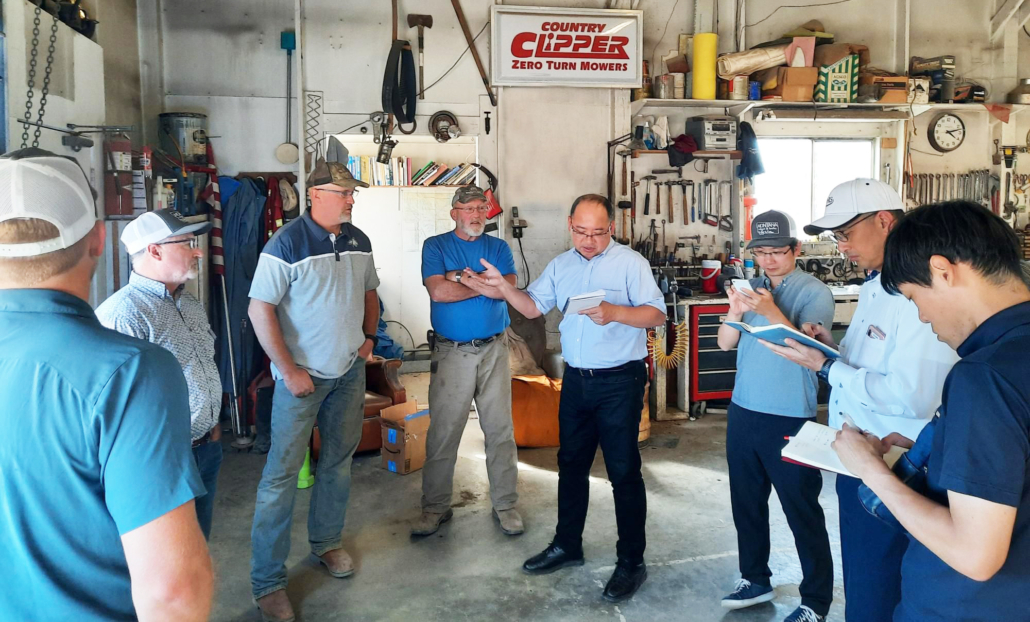
A trade team made up of members of the Japan Flour Millers Association visited Montana farmer Ed Bandel and his son, Jess, in October 2023. USW Japan Country Director Rick Nakano (shown here sharing information with the team) led that trade team to meet farmers and see wheat research facilities.
Farmers Find Visits Rewarding
Idaho wheat farmer and USW Vice Chairman Clark Hamilton described farm visits as an important event for customers. It is valuable for farmers who host them, too.
“In Idaho, half the wheat we grow is exported, so having customers come here to see our production and our farms is very important,” Hamilton, who hosted a technical trade team from South America in August 2022, said. “I found that it’s a pleasure to have them on the farm and to be able to share with them what we do and how we grow wheat. Many relationships have been built during the trade team season. It’s business, but it’s also personal.”
Goal: Promoting U.S. Wheat
USW invests funding from the USDA Foreign Agricultural Service (FAS) to bring trade teams to the U.S. Participating wheat-producing states connect customers with farmers and industry partners. The goal is straight-forward: to promote the reliability, quality, and value of all six U.S. wheat classes. The teams are shown production and farming practices, how wheat is transported and are able to see various research programs involving wheat.
The visits allow an in-person study of the U.S. wheat industry – from wheat field to export elevator.
“We are able to show our customers that our wheat and the people who supply it – from the farmers to the exporters – are dependable, and that they are focused on producing wheat sustainably,” said Steve Wirsching, Vice President and Director of USW’s West Coast Office.

